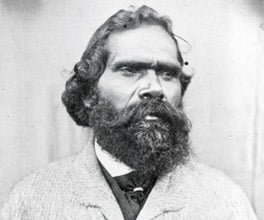Understanding points of view
Students explore the point of view of a person who lived during Victoria’s past.
They generate questions to understand the background beliefs and experiences of the historical figures, consider the motivations behind individual’s actions and the contribution these figures made to society.
Learning intention
Students will:
- Identify points of view in the past and present
- Identify questions to inform an historical inquiry
- Locate information related to inquiry questions in a range of sources
Resources
Circle thinking map - student template
Background information on Victorian historical figures (the activity Researching significant Victorians includes a list of historic figures or see More to explore for further resources)
Activity
Introduce students to a range of identities from Victoria’s past. You might like to use information from the Researching significant Victorians activity to help you do this.
Students choose a historical figure they are interested in exploring further.
Introduce the circle thinking map. Students place the name or a picture of their historical figure in the central circle of the map.
Students generate questions to discover more about the background of their historical figure, such as:
- Where and when was s/he born?
- What kind of upbringing/family life did s/he have?
- What were the key events in his/her life?
- Did s/he have particular cultural, political or religious beliefs?
Students include notes from their research in the middle circle of the map. For example, a student who researched Simon Wonga might include the following information; his father was a respected leader, he recieved a foot injury as a teenager that led him to be cared for by a European, hie became a leader in his community, he had many friendships with European settlers.
Ask students to think about how our own point of view is formed. How does our background and belief influence our actions? Concepts such as cause and effect, perspectives and empathy can be explored.
Students then consider the significance of the background beliefs and experiences of their historical figure in shaping his or her actions and the role s/he played in Victoria’s history. Students include these ideas and notes in the outer circle of the map. For example, the student who researched Simon Wonga might explore the way in which Wonga's understanding of his own culture and that of Europeans led to him being able to negotiate for the land that would become Coranderrk Aboriginal Mission.
Ask students to pair up. Using role play, students explore how their own historical figure might have interacted with others. Students could move around the class to explore a number of different pairings. How do background beliefs and experiences shape how we behave? What kind of differences in point of view might cause conflict?
Ask students to repeat the role play activity, this time comparing their own contemporary point of view with that of their historical figure. What kind of attitudes and beliefs change over time? Which ones don't? Why?
To extend the activity, students could develop a narrative from the point of view of their historical figure. This might be in the form of a story, monologue, video, audio recording, play or other creative interpretation.
Australian Dictionary of Biography





